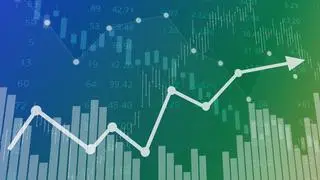Commodity prices can fluctuate in the market due to domestic and global events, and impact demand and supply. Risks arising out of the volatile price movement can be managed by using a price-risk management mechanism —hedging.
Hedging strategies are regularly used by commodity market participants, including traders, producers, farmers, speculators and companies. This not only helps mitigate price risks but also helps price discovery in the commodities market. Here is what one should know about hedging and how it helps.
What is hedging?
Hedging is a way to reduce price-risk exposure by taking an offsetting position in a particular commodity or related commodity. In other words, hedging provides insurance against risks arising out of price fluctuations.
It is a strategy for offsetting the price risk that is inherent in the spot market by taking an equal but opposite position in the futures market. Hedging with futures effectively locks the price of a commodity today, even if it will actually be bought or sold in the physical form in the future.
Benefits
Commodity market participants, including producers, manufacturers and traders, can hedge by taking long or short positions against the physical product. Hedging is considered one of the most-preferred methods for reducing price risks for market participants who have exposure to physical commodities.
One of the important benefits of hedging is reduction in risks related to price fluctuations. This can help the companies/traders shield their business operations and profits.
Hedging also significantly lowers distress costs in the event of an adverse situation faced by a company and help in better inventory management by companies and traders (importers/exporters).
Do keep in mind that hedging strategy enables market participants to reduce risks and not eliminate the risks.
How does it work?
You as a participant can take either a long hedge or a short hedge position, or both, depending on your need for one commodity or different commodities.
Companies or producers take a long hedge position to protect themselves against prices going up in the future, when they have to source an asset at a future price.
Consider Joe, a jewellery designer. Joe imports gold bars to make and sell jewellery in the market. Considering the currency fluctuations, the management expects the prices to move up. Joe needs raw material of 100 kg of gold in three months.
The risk of rising prices can be mitigated by taking up positions in the futures market in exchanges such as Multi-Commodity Exchange (MCX). How?
On September 10, Joe buys a futures contract at, say, ₹51,400 per 10 grams. The gold spot price on that date is ₹51,500 per 10 grams.
At the beginning of December, the futures contract of gold stands at ₹53,800 per 10 grams and the spot price is ₹52,250 per 10 grams.
By selling in the futures market, Joe will make a profit of ₹2,400 per 10 grams. Then, in the physical market, when the company buys the raw material at ₹52,250 per 10 grams, the net costs will work out to ₹49,850 per 10 grams (52,250-2,400).
A short hedge is taken when you already have the product and you have to protect yourself against prices falling in the future. In both cases, hedging will offset the loss of rising and falling price movements of the market.
For instance, X is a manufacturer of a commodity for which the raw material is copper.
The company expects the price to fall in the next three months, and it can hedge its stock in December itself in the futures market. How?
Suppose the spot price of copper in September is ₹521 per kg, while the futures price for the December contract is ₹530 per kg. To mitigate the price fall, the company sells (short) the December contract in September for ₹ 530 per kg and buys raw material.
In December, the copper price declines and the company sell its product in the market at ₹481 per kg. The potential loss is ₹40 per kg (521-481).
The company buys the December contract in the exchange at ₹482 per kg (in December) as the copper prices have declined. The company gains ₹48 per kg (530-482). Thus, it will be selling at an effective price of ₹529 per kg (481+48), while the market price rules at ₹481 per kg.







Comments
Comments have to be in English, and in full sentences. They cannot be abusive or personal. Please abide by our community guidelines for posting your comments.
We have migrated to a new commenting platform. If you are already a registered user of TheHindu Businessline and logged in, you may continue to engage with our articles. If you do not have an account please register and login to post comments. Users can access their older comments by logging into their accounts on Vuukle.